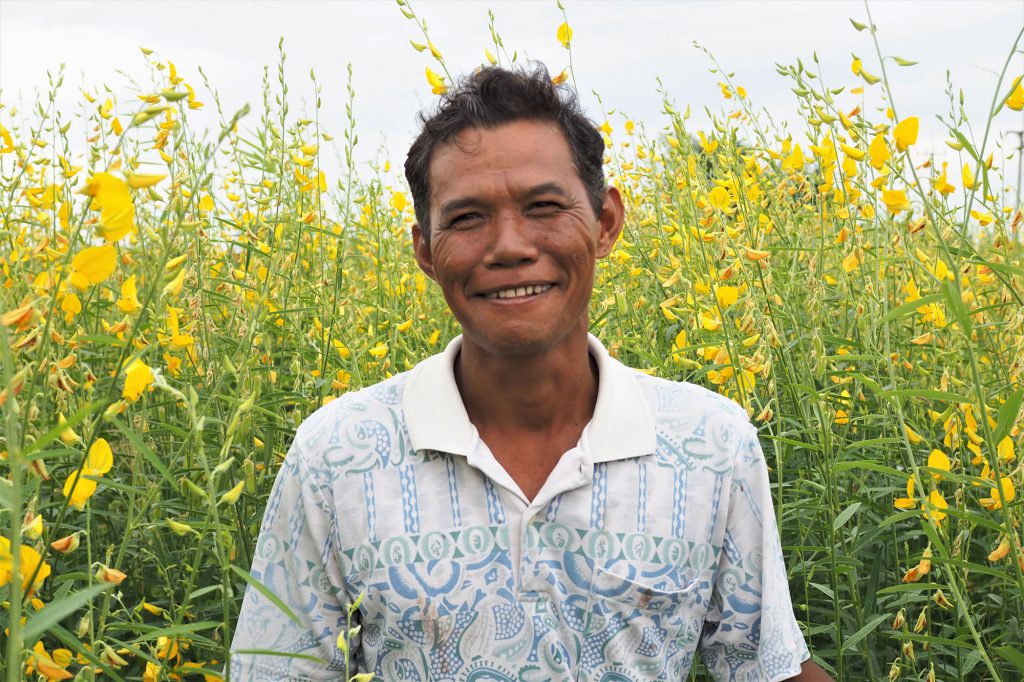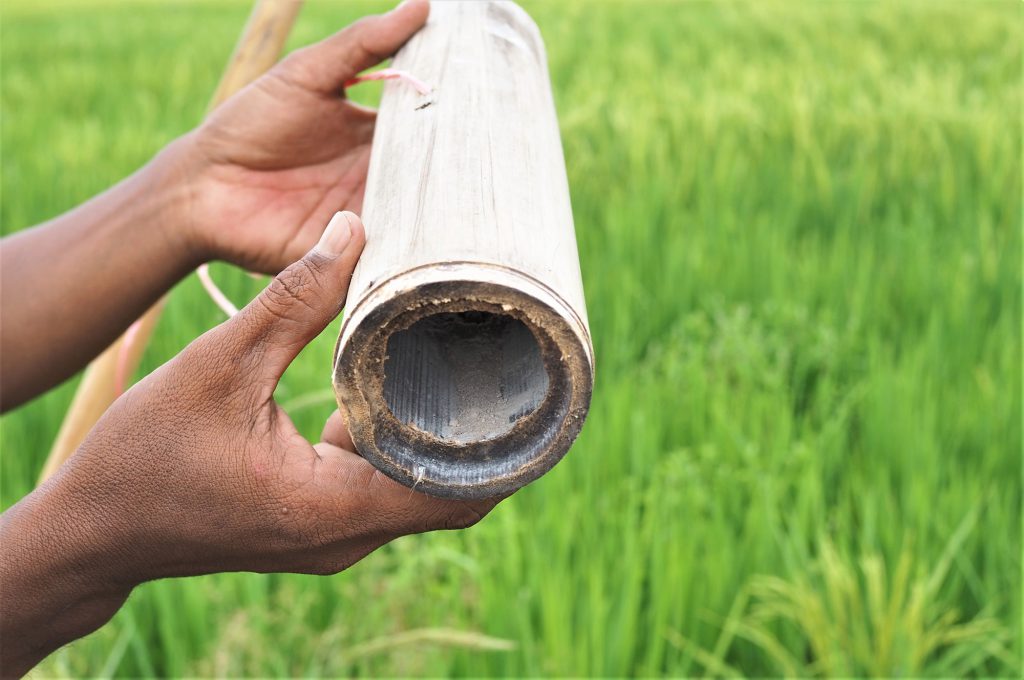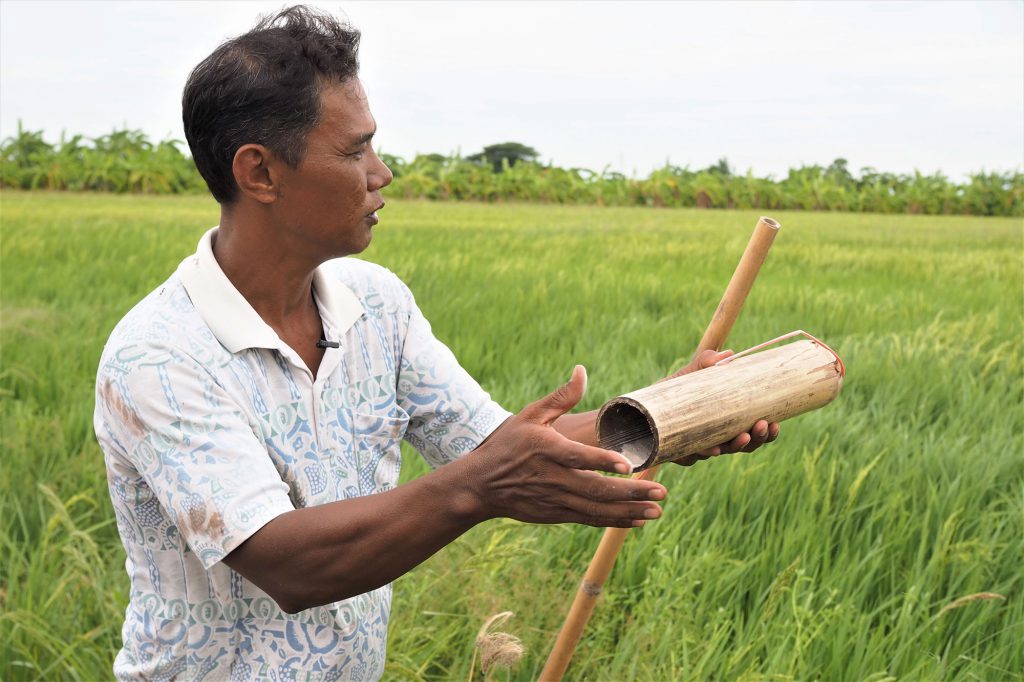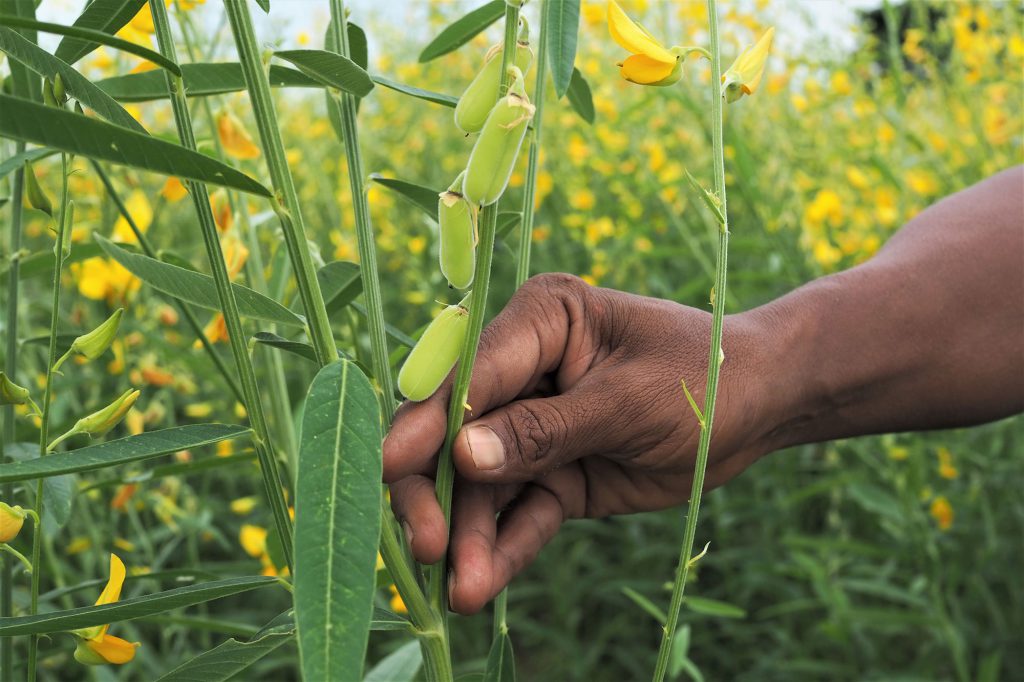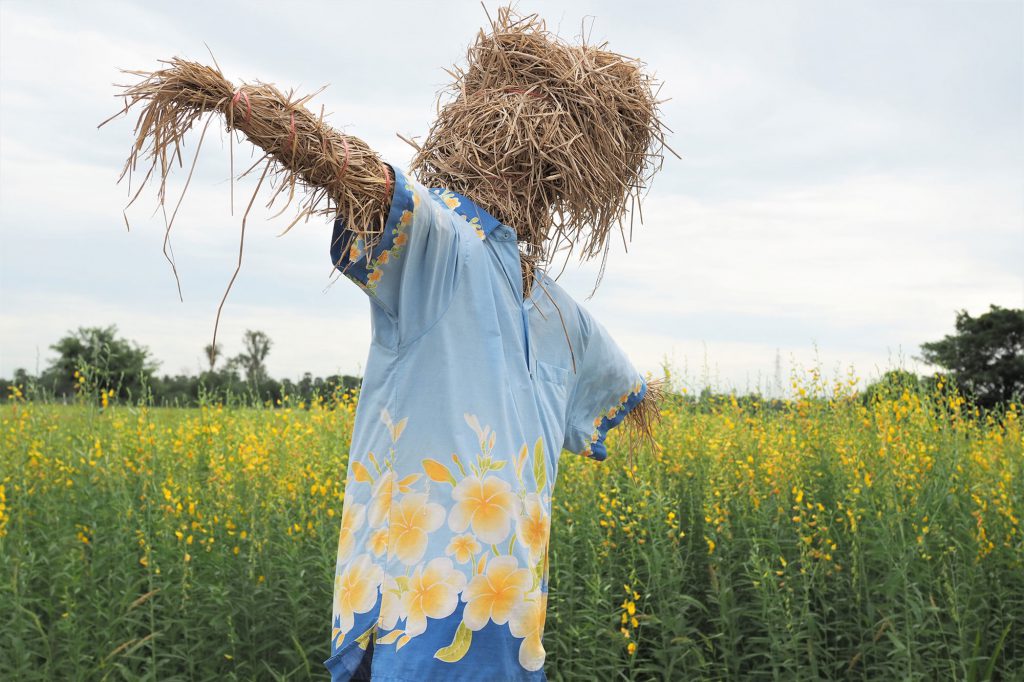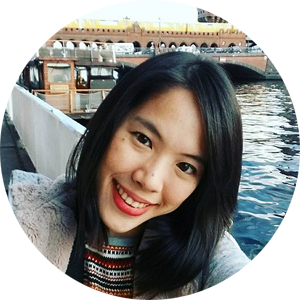Instead of going for a new round of planting right away, more Thai farmers in Ang Thong province stop lighting fires in their paddy fields and decide to give the soil a break by growing other crops such as Por Tuang that benefit their soil handsomely and help cut excessive use of fertilizer.
“I am able to reduce fertilizer from 70 kg per rai to only 25 kg. I cannot believe it,” Mr. Teera Srilatham, a 44-year-old smallholder rice farmer from Wiset Chai Chan district said with a big smile on his face.
According to him, Por Tuang or sunn hemp recovers unused nutrients and retain soil moisture, resulting in higher crop yields and better quality of rice.
He also proudly said that his paddy field is pesticide-free since he uses the ubiquitous fungus, Beauveria bassiana, as a biological pest control method.
“This is made of bamboo and the fungus is made from cooked rice. It is all free of charge and non-chemical,” Mr. Teera told, pointing to a long bamboo tube filled with the white powdery substance he hangs up along his rice field.
Beauveria bassiana is used to kill the pests, especially brown planthoppers, a pest that always causes severe damage to rice farming in several part of Thailand.
“I am happy that I do not have to reply on any chemical input and still produce good rice.”
Mr. Teera is an active rice farmer of Regenerative Rice Farming in Thailand Project and has joined the project since 2018, the first year the project has been implemented.
Soil and land preparation are among the key topics the project focuses to improve the soil fertility and clean the land from weedy rice and weeds.
At present, 150 farmers in Ang Thong and Chainat provinces of central Thailand are learning more about the innovative rice cultivation technology to grow better while improving their living income and the soil fertility without hurting the environment.
All rice produced under the project can be sold at a guaranteed price from the project’s main partners – Mars Food and Herba Bangkok SL (Ebro Foods SA).
“We extend Por Tuang areas by asking the leader farmers to grow it and let their neighbours see the benefits [of alternative crops] with their own eyes. It really works and helps cut back on spending for urea fertilizers,” said Sucharee Weragulpiriya, an agricultural research officer at the Land Development Department.
As of now, farmers in the Chao Phraya River basin have been advised to skip non-seasonal rice plantation next year since the four major dams supporting Thai people in the Central region are running so low on water.
Although some rice farms in the Central Plains can survive better than others in non-irrigated areas due to available underground water sources, Ms. Sucharee has different ideas for the soil health, saying this would be a good time for farmers to pay more attention to the soil fertility.
“Nutrients in the soil are essential for the rice plants to grow.”
Thailand’s Land Development Department is among key partners, leading the work to extend plantation of alternative crops and increase awareness of alternative means of soil treatment.
Besides Por Tuang, alternative crops to rice are maize and soybean which are also less water-intensive and economically more rewarding for smallholder farmers.
